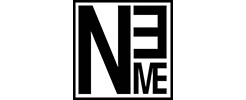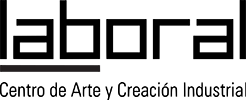



NeMe and curator Marc Garrett, Co-Founding and Co-Artistic Director of Furtherfield, have the pleasure to invite you to Children of Prometheus at NeMe Arts Centre, Limassol. The exhibition investigates the landscape of a rapidly transforming world and how some of these shifts inform and affect our immediate environment.
The complex nature of the ancient Greek myth of Prometheus has inspired philosophers, authors and artists throughout many centuries and will continue to do so because of the powerful contradictions which it embodies which reflects the ongoing dualities present in both the human mind and physical existence. Acknowledging that the Promethean spirit lives on in the ambitions of science and technology, which in many cases defies the limits imposed upon humanity by nature, the post-modern Prometheus belongs to an organised world focused on the technology of the internet. This rapidly expanding domain, with its presumed ethos of democracy belies the technologies of data mining, fake data, targeted personalised advertising, etc used by global conglomerates to engineer/manipulate people’s perception via media into a state of hyper-real urgency by dislocating the individual from physical realities.
Yet despite the plethora of work in the field, there has not been any sustained attempt to think through the larger philosophical, sociological, economical, political and cultural implications of new technologies. A crucial methodology for this exhibition is to view these themes through the eyes of the artists. Children of Prometheus generates a visual discussion around this persistent narrative that is still very enmeshed into our contemporary context.
This exhibition was originally produced in partnership with LABoral, in Gijon, and is an extension of the Monsters of the Machine: Frankenstein in the 21st Century, 18 Nov 2016 – 21 May 2017.
AOS (Art is Open Source) was born in Italy, in 2004 as an interdisciplinary research laboratory focused on merging artistic and scientific practices to gain better understandings about the mutation of human beings and their societies with the advent of ubiquitous technologies. AOS was created by Salvatore Iaconesi (engineer, hacker, artist, designer, TED Fellow, Eisenhower Fellow, Yale World Fellow, Prof. in Interaction Design at ISIA Design University in Florence), joined by Oriana Persico (social scientist, artist) and now includes more than 200 artists and researchers from across the world.
Alexia Achilleos is a Finnish-Cypriot artist with a background in fine art, archaeology and cultural studies. Her work is concerned with cultural, political and social issues which impact identity, specifically linked with cultural heritage & tourism, colonialism and national identity politics. She explores interactions, hybridisation and power struggles – especially how a cultural object’s function can change according to geography, history and politics, and how it can be suited to the needs and interests of the adopting culture.
Egor Chemokhonenko lives and works in Cyprus. He is a programmer and open source enthusiast, and keen to mix technologies with the arts. Egor has previously collaborated as a developer with fashion and arts projects such as Lumpen Agency and Cosmoscow Contemporary Art Fair. Machine self-portraits is his second programming for an artwork using artificial intelligence.
Anna Dumitriu is a British artist whose work fuses craft, sculpture and bioscience to explore our relationship to the microbial world, technology and biomedicine. She has an international exhibition profile, having exhibited at venues including The Picasso Museum in Barcelona, The Science Gallery in Dublin, The Museum of Contemporary Art (MOCA) Taipei, and The V & A Museum in London. She is artist in residence on the Modernising Medical Microbiology Project at the University of Oxford, a visiting research fellow: artist in residence in the Department of Computer Science at The University of Hertfordshire, and an honorary research fellow in the Wellcome Trust Brighton and Sussex Centre for Global Health at Brighton and Sussex Medical School.
Mary Flanagan is a writer and artist whose practice(s) extend into science, design, psychology, and futures studies. Her encompassing work in theory and criticism, with a wide range of essays and books on digital culture, is in constant dialogue with her use of digital and material platforms to create dynamic, constantly evolving systems that reflect cultural questions and trigger reflection. She is the author of the book Critical Play: Radical Game Design, the poetry collection Ghost Sentence, co-author of Values at Play in Digital Games and Similitudini. Simboli. Simulacri, and co-editor of the collections Reload: Rethinking Women in Cyberculture and Re:Skin. Her essays and articles have appeared in Salon, USA Today, The San Francisco Chronicle, and The Huffington Post.
Carla Gannis is an artist who lives and works in Brooklyn, New York. She received a BFA in painting from The University of North Carolina at Greensboro and an MFA in painting from Boston University. In the late 1990s she began incorporating net and digital technologies into her work. Gannis is the recipient of several awards, including a 2005 New York Foundation for the Arts (NYFA) Grant in Computer Arts, an Emerge 7 Fellowship from the Aljira Art Center, and a Chashama AREA Visual Arts Studio Award in New York, NY. She has exhibited in solo and group exhibitions both nationally and internationally. She is currently Assistant Chair of Digital Arts at Pratt Institute in Brooklyn.
Marinos Koutsomichalis is a media artist, scholar and creative technologist. He was born in Athens, GR (1981) and has since lived and worked in various cities around the world. His practice is hybrid, nomadic, and ethnographic, involving field-work, creative coding, critical theory, making, lecturing, live performance, workshopping, artist/research residencies, ‘Doing-It-With-Others’, and hands-on experimentation with materials and technologies of all sorts. His artistic corpus is prolific, yet persistently revolving around the same few themes: material inquiry/exploration; self-erasure; the quest for post-selfhood. He has hitherto publicly presented his work, pursued projects, led workshops, and held talks worldwide more than 250 times and in all sorts of milieux: from leading museums, acclaimed biennales, and concert halls, to churches, industrial sites, and underground venues. He has held teaching and research positions in various academic institutions, has published a book and numerous academic/scientific articles, and is currently a Lecturer in Multimedia Design for Arts at the Cyprus University of Technology (Limassol) where he co-directs the Media Arts and Design Research Lab.
Kypros Kyprianou is an artist based in Bristol. He investigates scientific, political and cultural constructs using materials drawn from official archives, reverse-engineered objects, scenarios from film and hearsay. His practice is often collaborative, culminating in performance, video, publications and site-specific intervention.
Gretta Louw was born in South Africa in 1981 but grew up in Australia. She received her BA in 2001 from the University of Western Australia and Honours in Psychology in 2002, subsequently living in Japan and New Zealand before moving to Germany in 2007. Her work has been exhibited widely, including in public institutions such as the Kunstmuseum Solothurn (CH), Münchner Stadtmuseum (DE), National Portrait Gallery (AUS), UNSW Galleries (AUS), LABoral (ESP), and Galeri Nasional Indonesia (IDN). She was awarded the Heinrich Vetter Preis by the City of Mannheim in 2014 and the Bahnwärter Stipendium by the City of Esslingen am Rhein in 2017, as well as studio scholarships in Munich and Mannheim. In 2017, Louw was an artist in residence at MozFest in London at the invitation of the Tate and the V&A museums in collaboration with the Mozilla Foundation. Louw has also curated thematic exhibitions at museums including the Villa Merkel (DE), Furtherfield Gallery (UK), and Paul W. Zuccaire Gallery (US) and contributed essays to numerous catalogues and publications.
Lynn Hershman Leeson is an artist and filmmaker whose work has been internationally acclaimed over the last five decades. Cited as one of the most influential media artists, Hershman Leeson is widely recognised for her innovative work investigating issues that are now acknowledged as key to the workings of society: the relationship between humans and technology, identity, surveillance, and the use of media as a tool of empowerment against censorship and political repression. Over the last fifty years she has made pioneering contributions to the fields of photography, video, film, performance, installation and interactive as well as net-based media art. ZKM | Center for Art and Media Karlsruhe, Germany, mounted the first comprehensive retrospective of her work titled Civic Radar. A substantial publication, which Holland Cotter named in The New York Times “one of the indispensable art books of 2016.” Lynn Hershman Leeson is a recipient of a Siggraph Lifetime Achievement Award, Prix Ars Electronica Golden Nica, and a John Simon Guggenheim Memorial Foundation Fellowship. In 2017 she received a USA Artist Fellowship, the San Francisco Film Society’s “Persistence of Vision” Award and the College Art Association’s Lifetime Achievement Award.
Joana Moll is a Barcelona / Berlin based artist and researcher. Her work critically explores the way post-capitalist narratives affect the alphabetization of machines, humans and ecosystems. Her main research topics include Internet materiality, surveillance, social profiling and interfaces. She has lectured, performed and exhibited her work in different museums, art centers, universities, festivals and publications around the world. Furthermore, she is the co-founder of the Critical Interface Politics Research Group at HANGAR [Barcelona] and co-founder of The Institute for the Advancement of Popular Automatisms. She is currently a visiting lecturer at Universität Potsdam and Escola Superior d’Art de Vic [Barcelona].
Cédric Parizot is a Researcher at the CNRS. He is an anthropologist of politics and currently works at the Institut d’Etudes et de Recherche sur le Monde Arabe et Musulman (IREMAM, Aix en Provence). His research focuses on mobility and borders in the Israeli – Palestinian space. He has recently published with Stephanie Latte Abdallah A l’ombre du mur: Israéliens et Palestiniens entre séparation et occupation, Arles, Actes sud, 2011. He coordinates a transdisciplinary research programme involving social scientists, scientists, artists and professionals in order to elaborate a multidisciplinary approach on the mutations of 21st century Borders in Europe and the Mediterranean at the Institute of Advanced Studies in Marseille, France.
Guido Segni, aka Clemente Pestelli, lives and works somewhere at the intersections between art, pop internet culture and data hallucination. With a background in Hacktivism, Net Art and Video Art, his work is characterized by minimal gestures on technology which combine conceptual approaches with a traditional hacker attitude in making things odd, useless and dysfunctional. Co-founder of Les Liens Invisibles, he exhibited in galleries, museums (MAXXI Rome, New School of New York, KUMU Art Museum of Talinn) and art & media-art international festivals (International Venice Biennale, Piemonte SHARE Festival, Transmediale). Currently he teaches at the Accademia di Belle Arti of Carrara, directs the imaginary REFRAMED lab and he is part of the editorial committee for the project Atypo.
Alan Sondheim is an independent writer/theorist/artist. He co-founded the Cybermind and Wrytingemail lists. He is editor of Being on Line and author of .echo, Disorders of the Real and The Wayward. He is also published widely online and his video/sound work is internationally exhibited. Sondheim is the developer of the concept of code work, wherein computer code itself becomes a medium for artistic expression. He explores notions of the ‘abject’ in the masculine and feminine online, and more recently has dealt with the machinic using the language of computer code to articulate novel forms of identity in cyberspace. His work crosses over between philosophical explorations and sound poetry and more recently he has returned to the language of music using the tonalities of a wide range of ethnic instruments. His current areas of exploration include: the aesthetics of virtual environments and installations; mapping techniques using motion capture and 3D laser scanners; Buddhist philosophy and its relation to avatars and online environments; and experimental choreography.
Featured Image:
Detail from ‘The Garden of Emoji Delights Triptych’ (2014) by Carla Gannis


